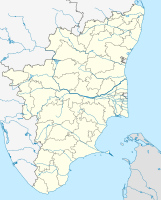
Photo from wikipedia
A recent innovation in seawater desalination is the use of multi-stage and multi-pass combinations of nanofiltration (NF) and reverse osmosis (RO) membranes. One example of this approach is the “Long… Click to show full abstract
A recent innovation in seawater desalination is the use of multi-stage and multi-pass combinations of nanofiltration (NF) and reverse osmosis (RO) membranes. One example of this approach is the “Long Beach method,” in which seawater passes through two different types of NF membranes to produce potable water. After several years of pilot studies comparing the performance of two-pass NF and single-pass RO systems, a number of membrane elements were sacrificed for autopsy analyses. The selected membranes represent different stages of operation including (1) new, (2) fouled, and (3) cleaned membranes. Used NF and RO spiral wound elements were removed from the first and last positions of the demonstration plant. Although operating data suggested no outward signs of membrane fouling – inorganic, organic, and bacterial accumulation were identified on all membranes. First pass RO and NF membranes contained similar amounts of deposited solids, while significantly fewer solids were found on second pass NF membranes. Viable, culturable marine bacteria were observed on all fouled and cleaned membranes, indicating that bacterial colonization of seawater NF/RO membranes was not (a) detected by plant performance monitoring devices, (b) prevented by microfiltration and chlorination, or (c) removed by chemical cleaning. Chemical cleaning recovered the measurable performance of both first pass RO and second pass NF membranes, but was relatively ineffective at removing deposited solids from first-pass NF membranes. Therefore, chemical-cleaning methods may need to be tailored and optimized more specifically for NF membranes used in seawater desalination.
Journal Title: Desalination and Water Treatment
Year Published: 2020
Link to full text (if available)
Share on Social Media: Sign Up to like & get
recommendations!